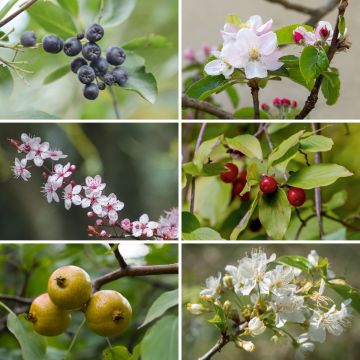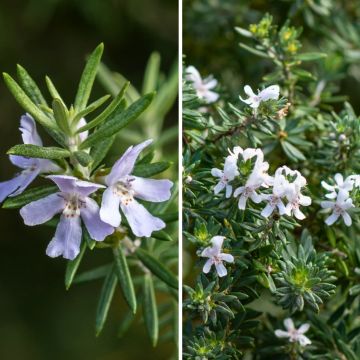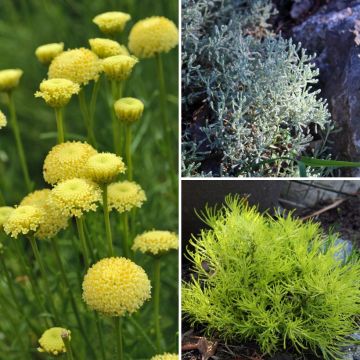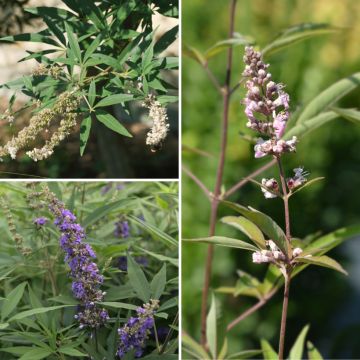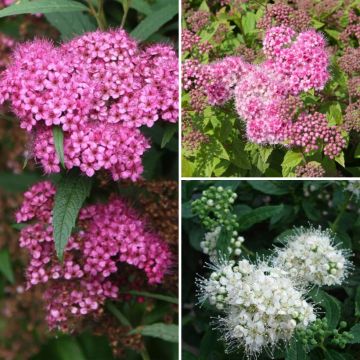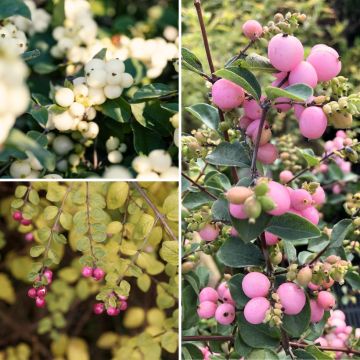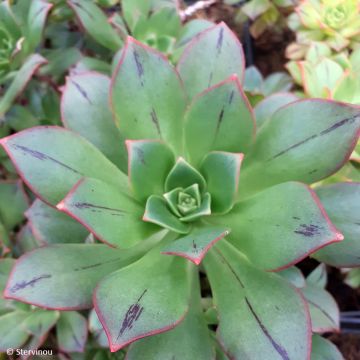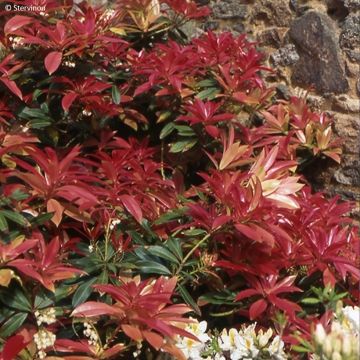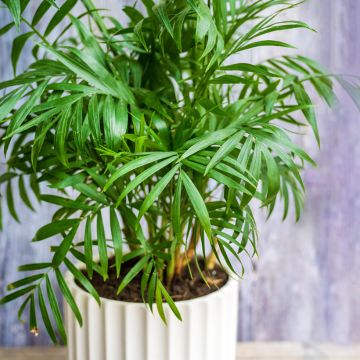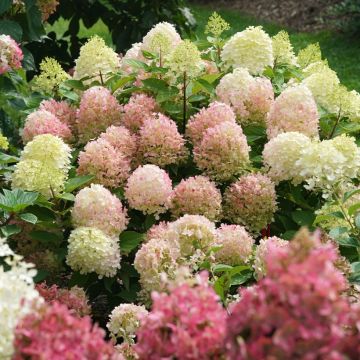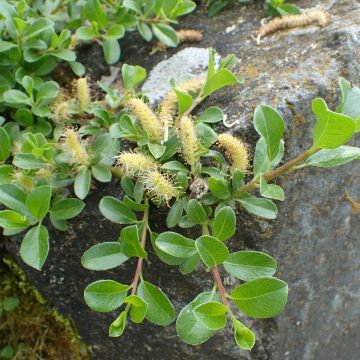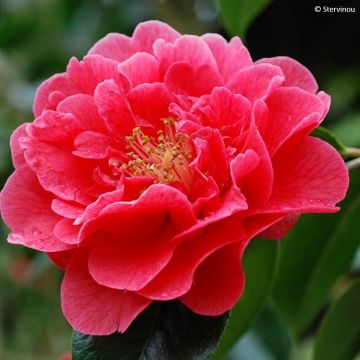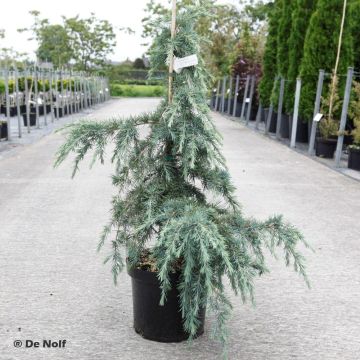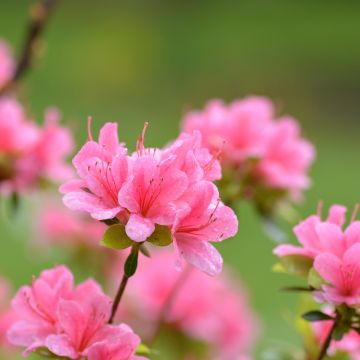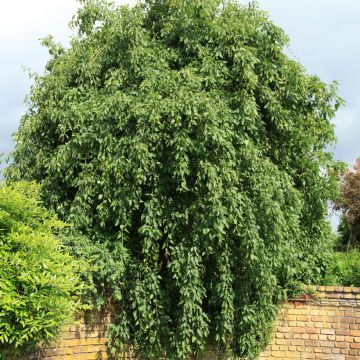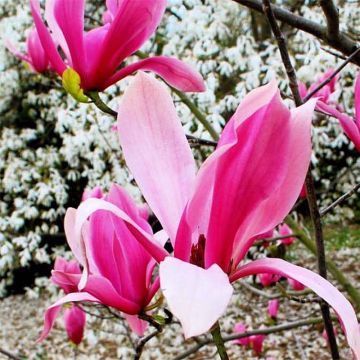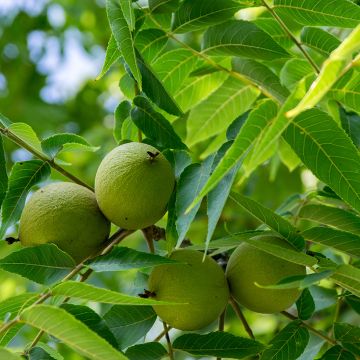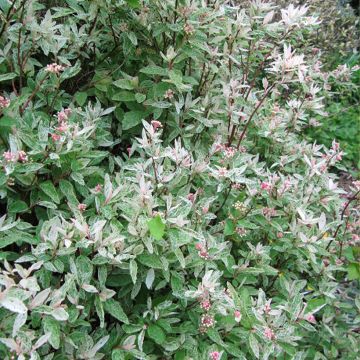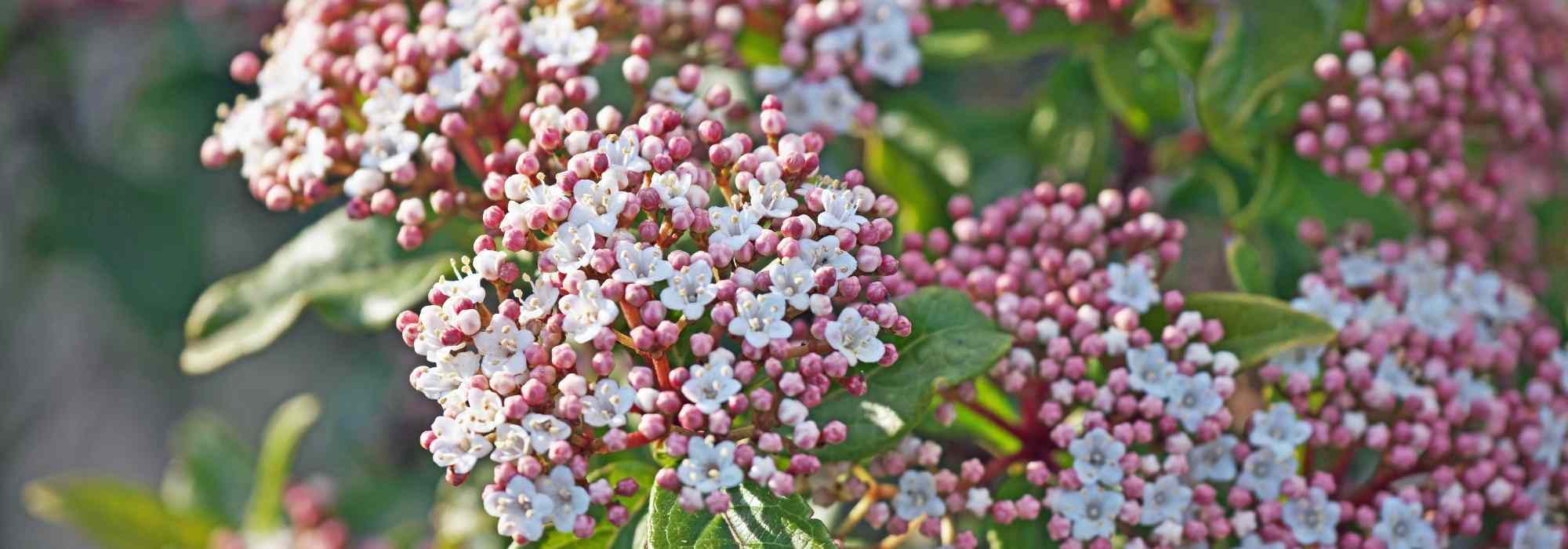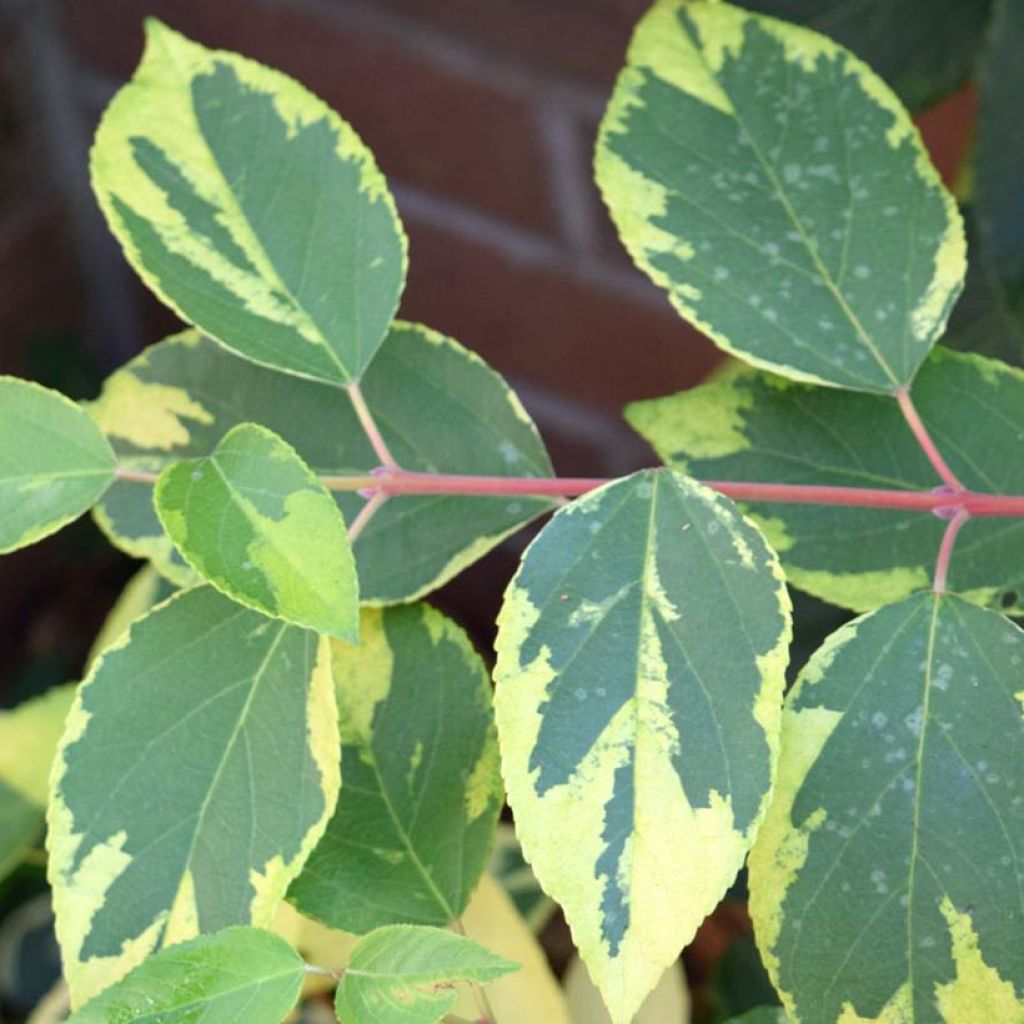

Aristotelia chilensis Variegata - Maqui panaché
Aristotelia chilensis Variegata - Variegated Maqui
Aristotelia chilensis Variegata
Variegated Maqui, Chilean wineberry, variegated Chilean Grape
Special offer!
Receive a €20 voucher for any order over €90 (excluding delivery costs, credit notes, and plastic-free options)!
1- Add your favorite plants to your cart.
2- Once you have reached €90, confirm your order (you can even choose the delivery date!).
3- As soon as your order is shipped, you will receive an email containing your voucher code, valid for 3 months (90 days).
Your voucher is unique and can only be used once, for any order with a minimum value of €20, excluding delivery costs.
Can be combined with other current offers, non-divisible and non-refundable.
Why not try an alternative variety in stock?
View all →This plant carries a 24 months recovery warranty
More information
We guarantee the quality of our plants for a full growing cycle, and will replace at our expense any plant that fails to recover under normal climatic and planting conditions.
Does this plant fit my garden?
Set up your Plantfit profile →
Description
The Aristotelia chilensis 'Variegata', better known as the Variegated Maqui or the Variegated Chilean Grape, is a small tree with evergreen foliage marginated with cream, which is particularly decorative in all seasons. The fruiting is interesting, delicious and vitamin-rich, occurring in late summer on female plants only. This less hardy shrub (-9°C (15.8 °F)) is best suited to mild climates or cold greenhouses where winters are less forgiving.
The Aristotelia chilensis variegata belongs to the Elaeocarpaceae family. It is a cultivar derived from the Aristotelia chilensis native to South America, specifically Argentina and Chile, in the Andean Cordillera region. It is a small tree, reaching no more than 3 m (9 ft 10 in) in all directions, with a naturally bushy habit and arching branches.
This plant is dioecious, meaning there are male and female plants. The variegated Chilean Grape has evergreen foliage. The lanceolate leaves, 3 to 7 cm (1.2 to 2.8 in) long, are a beautiful vivid green marginated with yellow-cream and are carried by red petioles. Flowering occurs in June, in the form of short panicles of yellow-white flowers resembling small bells measuring 3 to 5 mm (0.1 to 0.2 in) long. It is followed in late summer by the formation of black-violet drupes of berries about 6 mm (0.2 in) in diameter, which ripen in August-September. These deliciously acidic edible fruits have a taste somewhat reminiscent of grapes. They have recently received much attention due to their high nutritional value.
Moderately hardy (around -9°C (15.8 °F)), the Variegated Maqui should preferably be grown in pots in cold regions so that it can be brought indoors to a veranda or cold greenhouse during winter. It prefers rich, humus-rich, well-drained, moist soil with no excessive limestone content, in a sunny or semi-shaded exposure. You will need to plant several plants to hope for a fruit harvest. If the plant is damaged by a harsh winter, it may produce new shoots from the stump, similar to what Eucalyptus Gunii can do, for example.
The Variegated Maqui will find its place in a rural hedge, shrub beds, or even as a solitary plant in mild climates. It will also thrive in a large container as long as the substrate does not become too alkaline due to watering with hard water.
This plant has been used and studied for medicinal purposes. The literature mentions for example its use in poultices, as well as its febrifugal and astringent properties.
Report an error about the product description
Plant habit
Flowering
Foliage
Botanical data
Aristotelia
chilensis
Variegata
Elaeocarpaceae
Variegated Maqui, Chilean wineberry, variegated Chilean Grape
Other Shrubs A to Z
View all →Planting and care
Planting period
Intended location
Care
Planting & care advice
This item has not been reviewed yet - be the first to leave a review about it.
Haven't found what you were looking for?
Hardiness is the lowest winter temperature a plant can endure without suffering serious damage or even dying. However, hardiness is affected by location (a sheltered area, such as a patio), protection (winter cover) and soil type (hardiness is improved by well-drained soil).

Photo Sharing Terms & Conditions
In order to encourage gardeners to interact and share their experiences, Promesse de fleurs offers various media enabling content to be uploaded onto its Site - in particular via the ‘Photo sharing’ module.
The User agrees to refrain from:
- Posting any content that is illegal, prejudicial, insulting, racist, inciteful to hatred, revisionist, contrary to public decency, that infringes on privacy or on the privacy rights of third parties, in particular the publicity rights of persons and goods, intellectual property rights, or the right to privacy.
- Submitting content on behalf of a third party;
- Impersonate the identity of a third party and/or publish any personal information about a third party;
In general, the User undertakes to refrain from any unethical behaviour.
All Content (in particular text, comments, files, images, photos, videos, creative works, etc.), which may be subject to property or intellectual property rights, image or other private rights, shall remain the property of the User, subject to the limited rights granted by the terms of the licence granted by Promesse de fleurs as stated below. Users are at liberty to publish or not to publish such Content on the Site, notably via the ‘Photo Sharing’ facility, and accept that this Content shall be made public and freely accessible, notably on the Internet.
Users further acknowledge, undertake to have ,and guarantee that they hold all necessary rights and permissions to publish such material on the Site, in particular with regard to the legislation in force pertaining to any privacy, property, intellectual property, image, or contractual rights, or rights of any other nature. By publishing such Content on the Site, Users acknowledge accepting full liability as publishers of the Content within the meaning of the law, and grant Promesse de fleurs, free of charge, an inclusive, worldwide licence for the said Content for the entire duration of its publication, including all reproduction, representation, up/downloading, displaying, performing, transmission, and storage rights.
Users also grant permission for their name to be linked to the Content and accept that this link may not always be made available.
By engaging in posting material, Users consent to their Content becoming automatically accessible on the Internet, in particular on other sites and/or blogs and/or web pages of the Promesse de fleurs site, including in particular social pages and the Promesse de fleurs catalogue.
Users may secure the removal of entrusted content free of charge by issuing a simple request via our contact form.
The flowering period indicated on our website applies to countries and regions located in USDA zone 8 (France, the United Kingdom, Ireland, the Netherlands, etc.)
It will vary according to where you live:
- In zones 9 to 10 (Italy, Spain, Greece, etc.), flowering will occur about 2 to 4 weeks earlier.
- In zones 6 to 7 (Germany, Poland, Slovenia, and lower mountainous regions), flowering will be delayed by 2 to 3 weeks.
- In zone 5 (Central Europe, Scandinavia), blooming will be delayed by 3 to 5 weeks.
In temperate climates, pruning of spring-flowering shrubs (forsythia, spireas, etc.) should be done just after flowering.
Pruning of summer-flowering shrubs (Indian Lilac, Perovskia, etc.) can be done in winter or spring.
In cold regions as well as with frost-sensitive plants, avoid pruning too early when severe frosts may still occur.
The planting period indicated on our website applies to countries and regions located in USDA zone 8 (France, United Kingdom, Ireland, Netherlands).
It will vary according to where you live:
- In Mediterranean zones (Marseille, Madrid, Milan, etc.), autumn and winter are the best planting periods.
- In continental zones (Strasbourg, Munich, Vienna, etc.), delay planting by 2 to 3 weeks in spring and bring it forward by 2 to 4 weeks in autumn.
- In mountainous regions (the Alps, Pyrenees, Carpathians, etc.), it is best to plant in late spring (May-June) or late summer (August-September).
The harvesting period indicated on our website applies to countries and regions in USDA zone 8 (France, England, Ireland, the Netherlands).
In colder areas (Scandinavia, Poland, Austria...) fruit and vegetable harvests are likely to be delayed by 3-4 weeks.
In warmer areas (Italy, Spain, Greece, etc.), harvesting will probably take place earlier, depending on weather conditions.
The sowing periods indicated on our website apply to countries and regions within USDA Zone 8 (France, UK, Ireland, Netherlands).
In colder areas (Scandinavia, Poland, Austria...), delay any outdoor sowing by 3-4 weeks, or sow under glass.
In warmer climes (Italy, Spain, Greece, etc.), bring outdoor sowing forward by a few weeks.































